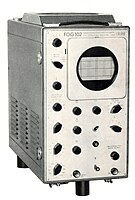
Photo from wikipedia
Abstract The traditional traveling wave fault location methods only consider the information about time domain or frequency domain characteristics, so it is difficult to ensure the location accuracy. Through the… Click to show full abstract
Abstract The traditional traveling wave fault location methods only consider the information about time domain or frequency domain characteristics, so it is difficult to ensure the location accuracy. Through the research of relationship between traveling wave characteristic parameters and frequency, this paper proposes a single-phase grounding fault location method based on traveling wave time-frequency characteristics. Firstly, determine the time during which the traveling wave reaches the busbar by using the quadratic B-spline wavelet analysis modulus maximum detection algorithm with denoising factor.. Then, according to the improved matrix pencil algorithm, extracte the frequency of traveling wave arriving at the bus measuring point, and the corresponding velocity of incident wave is obtained. Finally, the fault distance can be calculated using the location equation of modulus wave velocity difference. The simulation results show that this method proposed in this paper has higher accuracy than the traditional method, and in the terms of different grounding resistance, fault initial angle and fault distance, the error of fault location is smaller.
Journal Title: Electric Power Systems Research
Year Published: 2020
Link to full text (if available)
Share on Social Media: Sign Up to like & get
recommendations!